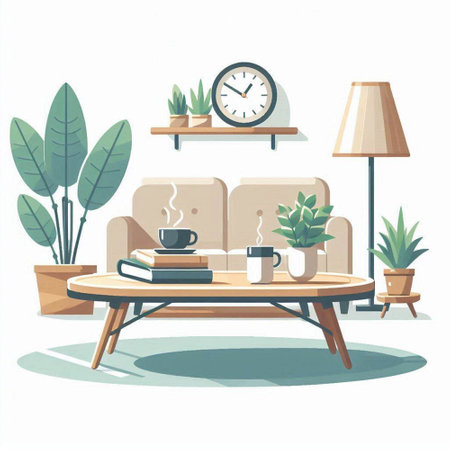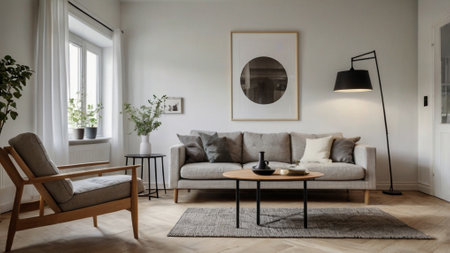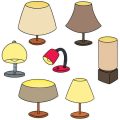Scandinavian Style: The Essentials
At its core, Scandinavian design is all about simplicity, functionality, and lightness. This aesthetic emerged from the Nordic need for cozy, practical living during long winters, resulting in interiors that feel open, bright, and calming. Clean lines, uncluttered layouts, and a muted palette—think whites, soft grays, and gentle wood tones—define the style. Every object serves a purpose, ensuring homes remain both beautiful and livable. For American homeowners, Scandinavian style resonates deeply because it offers a serene escape from everyday busyness. Its focus on natural light, breathable spaces, and minimal fuss fits perfectly with the desire for homes that feel fresh yet inviting. By embracing these essentials, you set the perfect stage to blend in other design influences without losing the clarity and tranquility that make Scandinavian interiors so enduring.
Blending Scandinavian with Mid-Century Modern
Scandinavian minimalism and Mid-Century Modern design share a common love for simplicity, clean lines, and timeless appeal. When thoughtfully blended, these two styles create interiors that feel both iconic and inviting—perfect for American homes seeking comfort and sophistication. Start by focusing on neutral color palettes: think whites, soft grays, and gentle earth tones as your base. Layer in rich wood finishes and pops of color inspired by Mid-Century classics, such as mustard yellow or teal, to add warmth without losing the Scandinavian airy vibe.
Key Elements to Combine
| Scandinavian Style | Mid-Century Modern |
|---|---|
| Light woods (birch, pine) | Walnut, teak furniture |
| Minimalist decor | Sculptural forms |
| Neutral palette | Pops of bold color |
| Functional pieces | Iconic designer chairs (Eames, Saarinen) |
| Cozy textures (wool, linen) | Geometric patterns |
How to Achieve the Look
Select foundational pieces like a streamlined Scandinavian sofa and pair it with a classic Mid-Century coffee table. Use accent pillows or rugs with geometric motifs for visual interest. Lighting is key—opt for fixtures with simple silhouettes and natural materials. Keep decor minimal but intentional: one statement art piece or a vintage clock can evoke Mid-Century vibes without overwhelming the space.
Design Philosophy Tip
The secret is restraint. Let each piece have breathing room. Embrace negative space and focus on quality over quantity. This curated approach creates a harmonious fusion that feels fresh yet nostalgic—a look that never goes out of style.

3. Layering Bohemian Touches
One of the most compelling ways to personalize a Scandinavian-inspired home is by introducing Bohemian elements. While Scandinavian design is known for its clean lines, neutral palettes, and simplicity, layering in organic textures and eclectic accents adds a new dimension of warmth and individuality. Think woven wall hangings, patterned area rugs, and macramé plant holders—these tactile pieces bring an inviting, lived-in feel that contrasts beautifully with minimalism. Mixing in global-inspired decor, such as hand-thrown pottery or embroidered cushions, introduces color and pattern without overwhelming the serene foundation. By thoughtfully curating these Boho touches, you can celebrate self-expression while preserving the airy openness that defines Scandinavian spaces. The result is a harmonious blend: stylish yet soulful, modern yet deeply personal.
4. Industrial Edge Meets Nordic Calm
The fusion of industrial and Scandinavian styles is all about finding harmony between raw, urban materials and the serene warmth of Nordic design. To achieve this balance in your home, start by blending industrial elements—like metal fixtures and exposed brick—with soft Scandinavian woods and cozy textiles. The key is to let each style complement, rather than compete with, the other.
Balancing Materials: Contrast and Cohesion
Use the cool tones and rough textures of industrial materials as a backdrop, then layer in light woods, cottons, and wools characteristic of Scandinavian design. For example, pair a metal-framed coffee table with a pale oak floor or add a plush wool throw over a leather sofa. This contrast creates visual interest while keeping the space inviting.
Mixing Color Palettes
| Industrial | Scandinavian |
|---|---|
| Charcoal gray, black, rust | White, light beige, soft pastels |
Combine these palettes by using industrial hues for larger furniture or architectural features, then soften the look with Scandinavian neutrals in rugs, curtains, or cushions.
Tips for Seamless Integration
- Keep spaces uncluttered to highlight the clean lines of both styles.
- Add greenery with simple planters to bring freshness and life.
- Select lighting that marries form and function—think matte black pendants above a light wood dining table.
This thoughtful approach ensures your home feels both modern and comfortable—a perfect blend of industrial edge and Nordic calm.
5. Color Coordination: Neutral Meets Bold
Scandinavian interiors are known for their calming neutrals—think soft whites, gentle grays, and natural wood tones. But mixing this style with other American-favorite trends, like mid-century modern or boho chic, means you can play with color in a way that feels fresh and personal. Start by keeping your foundation simple: white walls, light wood floors, and minimalist furniture set the stage for creative pops of color. Layer in accents inspired by other styles—such as a vibrant Persian rug from eclectic decor, jewel-toned velvet cushions for a glam touch, or bold artwork with an urban edge. The key is balance. Choose one or two accent colors to repeat throughout your space, making sure they harmonize rather than compete. Don’t be afraid to introduce unexpected hues—mustard yellow, navy blue, or even terracotta can energize a Scandinavian room without overwhelming its serenity. For a distinctly American vibe, incorporate trendy elements like color-blocked accessories or statement lighting in playful shades. Ultimately, let your personality guide your palette; a well-curated blend of neutral and bold creates a home that feels both timeless and uniquely yours.
6. Practical Tips for a Balanced Mix
Ready to blend Scandinavian simplicity with your favorite interior design trends? Here’s how you can do it—American style. Start by choosing a neutral base: think white walls, light wood floors, and minimalist furniture. This sets the tone for Scandinavian calm and lets other styles shine through. Next, layer in statement pieces that reflect your personal taste—maybe a bold mid-century modern chair, an industrial metal lamp, or a vintage American rug. Don’t be afraid to mix materials like matte ceramics, leather, and natural fibers; this keeps your space tactile and approachable.
Embrace Functionality
Prioritize function just as much as form. Invest in versatile furniture—modular sofas, extendable dining tables, or storage-friendly coffee tables—that supports your lifestyle. Americans love open spaces for entertaining, so keep layouts flexible and clutter-free.
Add Personality with Accents
Use textiles and art to introduce color and texture without overwhelming the room. Throw pillows in geometric patterns or locally sourced artwork can bridge Scandinavian minimalism with Americana warmth.
Stay True to You
The most successful interiors feel lived-in and authentic. Incorporate family heirlooms, travel finds, or DIY pieces that tell your story. Mix old and new—Scandi classics with farmhouse charm or urban chic—to create a home that’s uniquely yours and suited for real American living.


